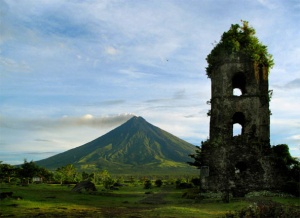Mount Mayon eruption imminent as evacuation begins

A major eruption of Mount Mayon in the Philippines could be just days away, scientists have warned. Meanwhile authorities have completed the scramble to evacuate some 29,000 of the 50,000 people who live in the danger zone, 8km from the crater.
The volcano continued to spout clouds of ash and steam into the sky and more lava was seen trickling down its flanks, while the ground rumbled with volcanic tremors, said the Philippine Institute of Volcanology and Seismology (Phivolcs).
“If the trend is of increasing unrest, a hazardous volcanic eruption is possible within weeks,” Phivolcs warned in a statement.
Philippine officials first raised the alert level for Mayon on Monday. Government volcanologist Renato Solidum said that five new ash explosions, one of them reaching 500m in the air, had recently shaken the slopes of the volcano.
He also warned that a major eruption could mean a further 75,000 people would have to be evacuated.
ADVERTISEMENT
In daylight, the summit was obscured by clouds of ash or steam. At night, thin streams of glowing lava lit the slopes.
The authorities ordered the evacuation of the danger zone on Monday after Phivolcs increased its alert to Level Three. A Level Four alert would mean an eruption could occur within days, and a Level Five alert would mean an eruption is in progress.
The 2,462-metre volcano, on the main island of Luzon, is the most active in the Philippines, having erupted more than 40 times since records began about four centuries ago. The surrounding area is mostly agricultural.
The authorities brought in military lorries to help in the evacuation. Those displaced are being sheltered in schools and other buildings outside the danger zone. They are being given food and water.
The authorities said their aim was to avoid any deaths at all during Mayon’s current bout of activity. Their evacuation plan has been well rehearsed. The last time the volcano erupted, in 2006, about 30,000 people were moved to safety, and no lives were lost.
But typhoon-triggered mudslides near the mountain later that year buried entire villages, killing more than 1,000 people.
Another eruption in 1993 killed 79 people. The most violent eruption, in 1814, killed more than 1,200 people and buried a town in mud.

